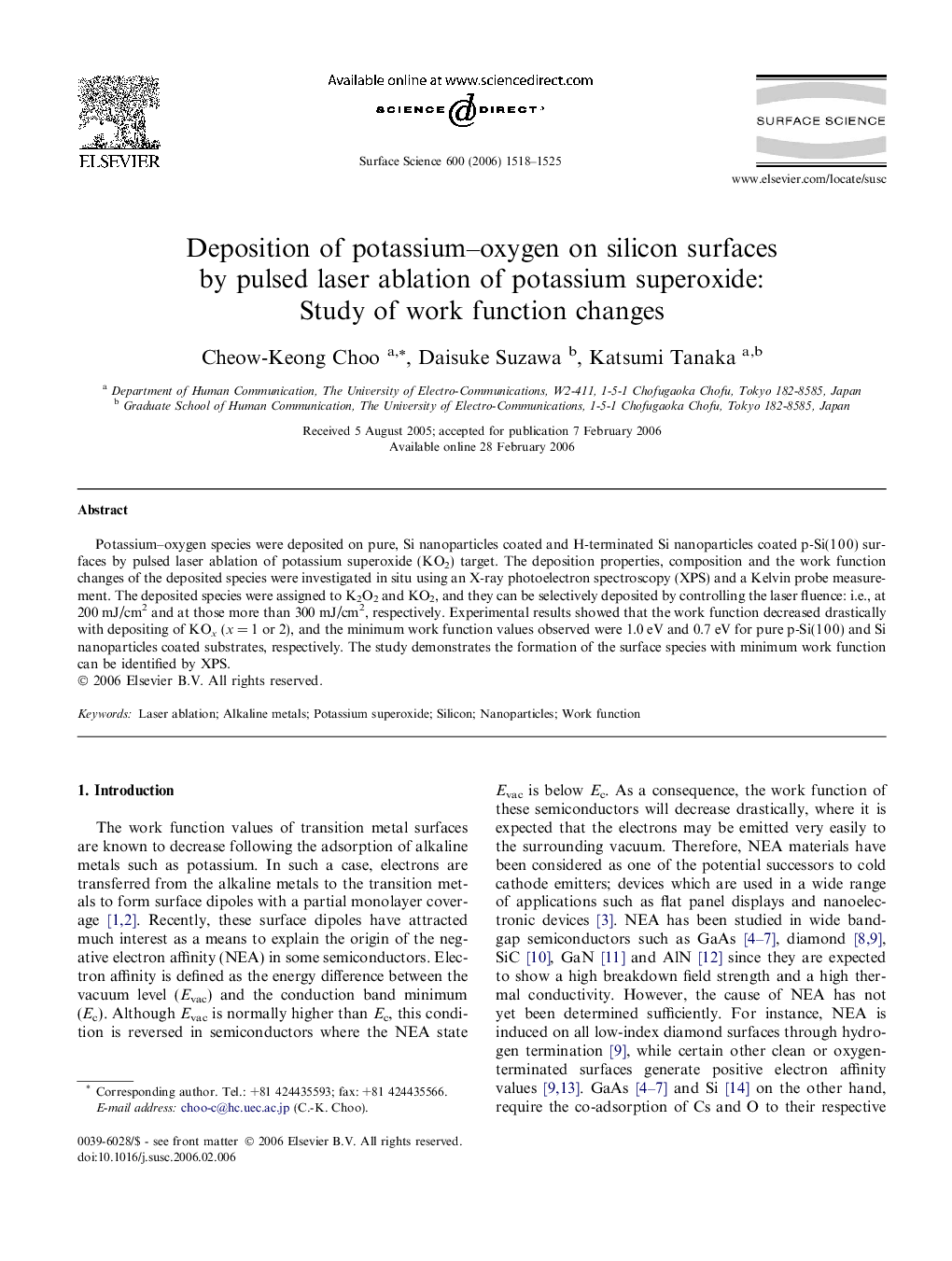| Article ID | Journal | Published Year | Pages | File Type |
|---|---|---|---|---|
| 5426361 | Surface Science | 2006 | 8 Pages |
Potassium-oxygen species were deposited on pure, Si nanoparticles coated and H-terminated Si nanoparticles coated p-Si(1 0 0) surfaces by pulsed laser ablation of potassium superoxide (KO2) target. The deposition properties, composition and the work function changes of the deposited species were investigated in situ using an X-ray photoelectron spectroscopy (XPS) and a Kelvin probe measurement. The deposited species were assigned to K2O2 and KO2, and they can be selectively deposited by controlling the laser fluence: i.e., at 200 mJ/cm2 and at those more than 300 mJ/cm2, respectively. Experimental results showed that the work function decreased drastically with depositing of KOx (x = 1 or 2), and the minimum work function values observed were 1.0 eV and 0.7 eV for pure p-Si(1 0 0) and Si nanoparticles coated substrates, respectively. The study demonstrates the formation of the surface species with minimum work function can be identified by XPS.
